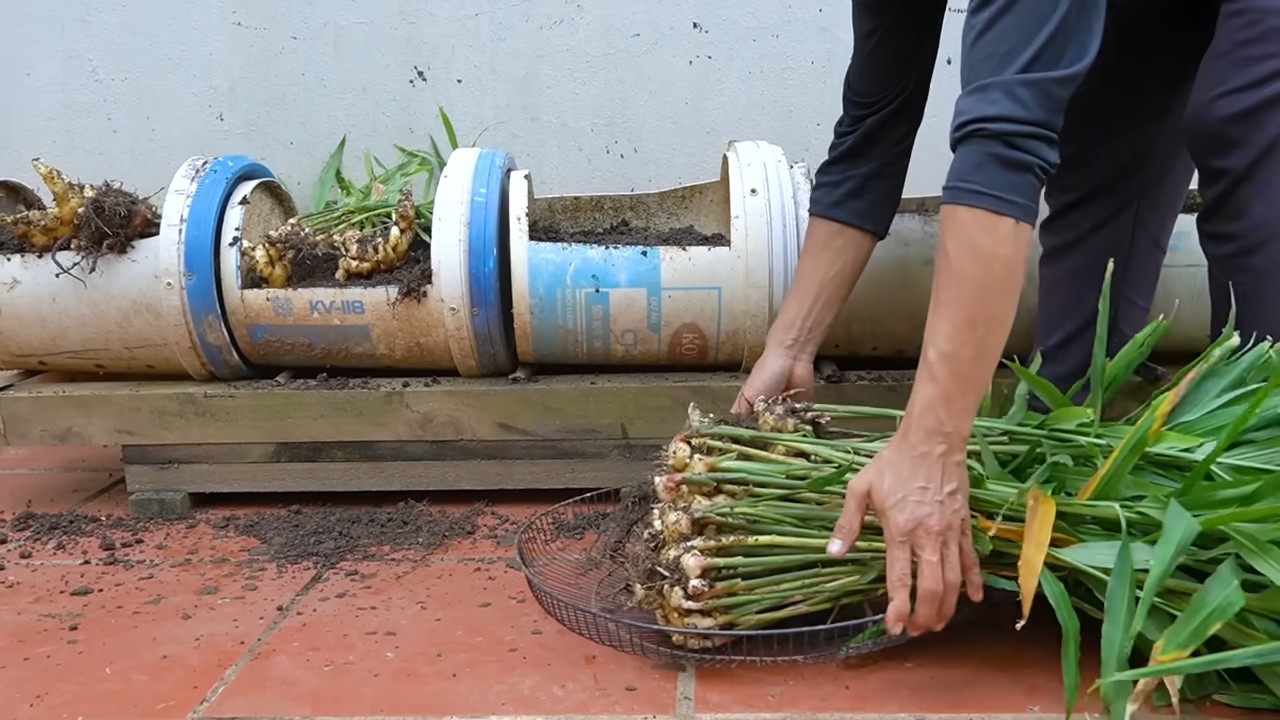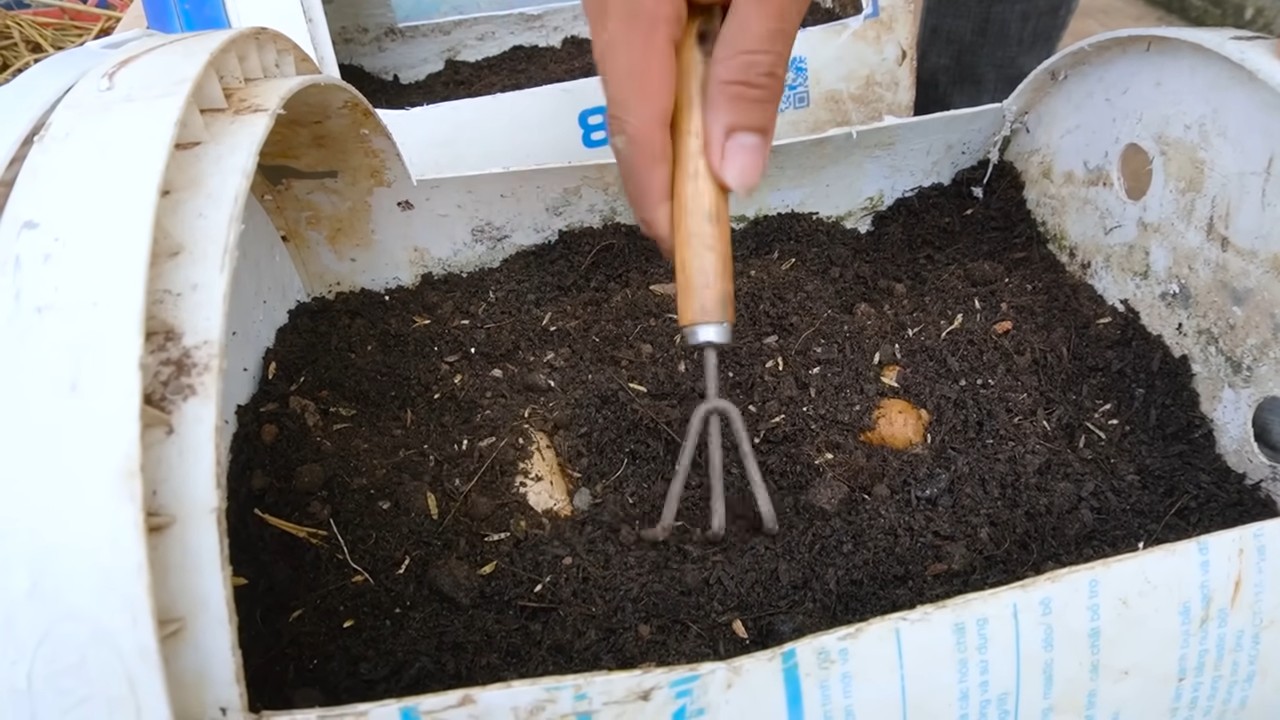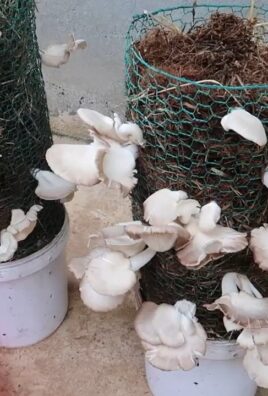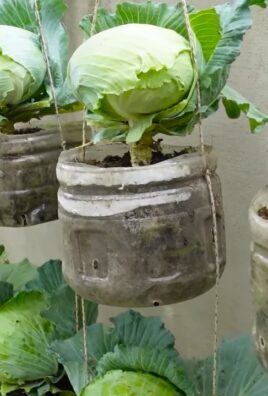Yellow watermelon growing tips are your secret weapon to unlocking a burst of sunshine right in your backyard! Imagine biting into a refreshingly sweet, vibrant yellow watermelon that you nurtured from seed to glorious fruit. Forget the grocery store – this summer, you can be the envy of the neighborhood with your unique and delicious harvest.
Watermelons, in general, have a rich history, dating back thousands of years to Africa. They were even found in King Tut’s tomb! While the traditional red watermelon is a summertime staple, the yellow variety offers a delightful twist on a classic. They’re often sweeter and have a slightly honeyed flavor, making them a true treat.
But let’s be honest, growing watermelons can seem intimidating. They’re big, they need space, and sometimes, they just don’t seem to thrive. That’s where these DIY tricks and hacks come in! I’m going to share my tried-and-true methods for successfully growing yellow watermelons, even if you’re a beginner gardener. From soil preparation to pollination secrets, I’ll guide you through every step of the process.
Why do you need these yellow watermelon growing tips? Because everyone deserves to experience the joy of harvesting their own food, and because yellow watermelons are simply too delicious to miss out on! Plus, these tips will save you time, money, and frustration, ensuring a bountiful harvest you can be proud of. Let’s get growing!

Growing Yellow Watermelon: Your DIY Guide for a Sweet Surprise!
I love watermelons! And when I first heard about yellow watermelons, I was immediately hooked. They are not only a visual highlight but also taste incredibly delicious – often sweeter and with a hint of honey. If you’re also eager to grow this sunny fruit in your own garden, you’ve come to the right place. I’ll show you how it’s done!
What you need:
- Yellow watermelon seeds: Make sure to get high-quality seeds from a trusted source. Varieties like ‘Yellow Doll’, ‘Yellow Crimson’, or ‘Gold in Gold’ are popular options.
- Seedling pots or trays: for starting seeds indoors.
- Seed starting mix: A light, well-draining soil is ideal.
- Garden soil: For the bed or container where the watermelon will later grow.
- Compost or well-rotted manure: For soil improvement.
- Garden fleece or mulch: To protect young plants and for weed control.
- Watering can or hose: For irrigation.
- Garden tools: Spade, rake, possibly a shovel.
- Trellis (optional): If you have limited space or are growing a vining variety.
- Patience: Watermelons need time and care to ripen.
Preparation: The Foundation for a Bountiful Harvest
Before we start with the actual cultivation, we need to make a few preparations. This is important so that the watermelon can grow and thrive optimally later on.
- The right location: Watermelons love the sun! Choose a sunny spot in your garden that receives at least 6-8 hours of direct sunlight per day. The soil should be well-draining and rich in nutrients.
- Soil improvement: Watermelons are heavy feeders. This means they need a lot of nutrients to produce large, juicy fruits. Improve the soil by incorporating plenty of compost or well-rotted manure. This loosens the soil, improves drainage, and provides the plants with essential nutrients.
- Soil pH: Watermelons prefer a slightly acidic to neutral soil pH (between 6.0 and 7.0). You can check the pH with a soil test and adjust it if necessary.
Sowing and Starting Indoors: The Beginning of Life
I recommend starting the watermelon seeds indoors. This gives the young plants a head start and protects them from unfavorable weather conditions.
- Sowing time: Start sowing about 4-6 weeks before the last expected frost. In Central Europe, this is usually in April or May.
- Sowing: Fill seedling pots or trays with seed starting mix. Place 2-3 seeds per pot about 2-3 cm (about 1 inch) deep into the soil. Cover the seeds lightly with soil and water them gently.
- Location: Place the pots in a warm, bright place. A temperature of 20-25°C (68-77°F) is ideal for germination. You can also use a heating mat to speed up germination.
- Moisture: Keep the soil moist, but not wet. Avoid waterlogging, as this can lead to rot.
- Germination: The seeds usually germinate within 7-14 days.
- Pricking out: Once the seedlings have 2-3 true leaves, you can transplant them into larger pots. Select only the strongest seedlings.
Planting Out: Out into Freedom!
Once the danger of frost has passed and the soil temperature is at least 15°C (59°F), you can plant the watermelon plants outdoors.
- Hardening off: Before you plant them out, you should harden off the plants for a few days. Place them outdoors during the day and bring them back in at night. This helps them get used to the new conditions.
- Spacing: Watermelons need a lot of space. Maintain a planting distance of at least 1 meter (about 3 feet) between plants and 2 meters (about 6.5 feet) between rows.
- Planting hole: Dig a planting hole that is slightly larger than the plant’s root ball.
- Placing the plant: Carefully place the plant in the planting hole and fill it with soil. Lightly press the soil down.
- Watering in: Water the plant thoroughly.
- Mulching: Cover the soil around the plants with garden fleece or mulch. This helps to retain moisture in the soil, suppress weeds, and keep the soil warm.
Care: Loving Attention for a Bountiful Harvest
Watermelons need regular care to grow and thrive optimally.
- Watering: Water the plants regularly, especially during dry periods. Make sure the soil is always slightly moist. Avoid wetting the leaves, as this can promote fungal diseases. It is best to water in the morning so the leaves can dry during the day.
- Fertilizing: Fertilize the plants regularly with a balanced fertilizer. Start fertilizing about 2 weeks after planting out. Follow the instructions on the fertilizer package. You can also use organic fertilizer like compost tea.
- Weed control: Keep the area around the plants free of weeds. Weeds compete with the watermelons for nutrients and water.
- Trellis (optional): If you have limited space or are growing a vining variety, you can use a trellis. This helps to support the plants and keep the fruits off the ground.
- Pollination: Watermelons rely on pollination by bees and other insects. If you have few bees in your garden, you can also pollinate the flowers by hand. To do this, use a small brush to transfer pollen from the male flowers to the female flowers. You can recognize the female flowers by the small fruit at the base of the blossom.
Harvest: The Reward for Your Efforts
Harvest time is the most exciting part of growing! But how do you know when a watermelon is ripe?
- Ripening time: The ripening time for watermelons varies depending on the variety and weather conditions. It generally takes about 80-100 days from sowing to harvest.
- Signs of ripeness: There are several signs that indicate a watermelon is ripe:
- The tendril: The tendril closest to the fruit’s stem will dry up and turn brown.
- The underside: The spot where the watermelon rests on the ground will turn yellowish or cream-colored.
- The sound: Gently knock on the watermelon. A ripe watermelon sounds hollow.
- The rind: The rind will become dull and lose its shine.
- Harvesting: Carefully cut the watermelon from the stem with a sharp knife or garden shears. Leave a small piece of the stem attached to the fruit.

Conclusion
So, there you have it! Mastering the art of growing yellow watermelons isn’t just about planting seeds; it’s about understanding their unique needs and providing the right environment for them to thrive. This DIY guide offers a comprehensive approach, empowering you to cultivate these vibrant and delicious fruits right in your own backyard.
Why is this a must-try? Because the reward is so much greater than the effort. Imagine biting into a crisp, sweet, yellow watermelon that you nurtured from a tiny seed. The satisfaction is unparalleled. Beyond the taste, growing your own produce connects you to nature, reduces your carbon footprint, and ensures you know exactly what’s going into your food. Plus, yellow watermelons are a conversation starter! They’re a unique and visually stunning addition to any summer gathering.
But the journey doesn’t end here. Feel free to experiment with different varieties of yellow watermelon. Some are sweeter, some are crisper, and some have subtle flavor nuances that you might prefer. Consider trying ‘Yellow Doll’ for its early maturity or ‘Buttercup Yellow’ for its exceptional sweetness.
Don’t be afraid to tweak the techniques to suit your specific climate and soil conditions. If you live in a particularly hot region, providing extra shade during the hottest part of the day can be beneficial. If your soil is heavy clay, amending it with plenty of organic matter will improve drainage and aeration.
And remember, growing yellow watermelons is a learning process. Don’t be discouraged if you encounter challenges along the way. Every season is an opportunity to learn and improve. The key is to observe your plants closely, pay attention to their needs, and adapt your approach accordingly.
We strongly encourage you to give this DIY guide a try. The taste of homegrown yellow watermelon is an experience you won’t soon forget. And once you’ve harvested your first crop, we’d love to hear about your experience! Share your tips, tricks, and triumphs in the comments below. Let’s build a community of yellow watermelon enthusiasts and help each other grow the best possible fruit. Your insights could be invaluable to other gardeners embarking on this exciting journey. Let’s cultivate success together!
Frequently Asked Questions (FAQ)
What are the key differences between growing yellow and red watermelons?
While the fundamental principles of watermelon cultivation apply to both yellow and red varieties, there are some subtle differences to consider. Yellow watermelons often have a slightly shorter growing season than some red varieties. They may also be more susceptible to certain pests and diseases, so vigilant monitoring is crucial. Furthermore, the sweetness profile can differ; yellow watermelons tend to have a honey-like sweetness, while red watermelons often have a more pronounced watermelon flavor. Understanding these nuances will help you tailor your growing practices for optimal results.
How do I know when my yellow watermelon is ripe?
Determining ripeness is crucial for enjoying the best flavor and texture. Several indicators can help you assess ripeness. First, look at the tendril closest to the fruit stem; it should be brown and dried. Second, check the underside of the watermelon where it rests on the ground; this spot should be a creamy yellow color. Finally, give the watermelon a gentle thump; a ripe watermelon will sound hollow. Avoid picking watermelons based solely on size or color, as these can be misleading.
What are the best soil conditions for growing yellow watermelons?
Yellow watermelons thrive in well-drained, sandy loam soil with a pH between 6.0 and 6.8. Before planting, amend the soil with plenty of organic matter, such as compost or well-rotted manure, to improve drainage, aeration, and nutrient content. Avoid heavy clay soils, as they can retain too much moisture and lead to root rot. If you have clay soil, consider growing your watermelons in raised beds or containers to improve drainage.
How much sunlight do yellow watermelons need?
Yellow watermelons require at least 6-8 hours of direct sunlight per day to thrive. Choose a planting location that receives ample sunlight throughout the growing season. Insufficient sunlight can result in smaller, less flavorful fruits. If you live in a particularly hot climate, providing some afternoon shade can help prevent sunscald.
What are some common pests and diseases that affect yellow watermelons, and how can I prevent them?
Common pests that can affect yellow watermelons include aphids, squash bugs, and vine borers. Diseases include powdery mildew, fusarium wilt, and anthracnose. To prevent these problems, practice good garden hygiene, such as removing plant debris and weeds. Use insecticidal soap or neem oil to control pests. Choose disease-resistant varieties and apply fungicides as needed. Crop rotation can also help prevent soilborne diseases.
How often should I water my yellow watermelon plants?
Watermelon plants need consistent moisture, especially during fruit development. Water deeply and regularly, aiming for about 1-2 inches of water per week. Avoid overhead watering, as this can promote fungal diseases. Use a soaker hose or drip irrigation to deliver water directly to the roots. Reduce watering as the fruits ripen to prevent them from splitting.
Can I grow yellow watermelons in containers?
Yes, you can grow yellow watermelons in containers, but you’ll need a large container (at least 20 gallons) with good drainage. Choose a bush or dwarf variety that is better suited for container growing. Use a high-quality potting mix and provide regular fertilization. Container-grown watermelons may require more frequent watering than those grown in the ground.
What kind of fertilizer should I use for yellow watermelons?
Yellow watermelons benefit from regular fertilization throughout the growing season. Use a balanced fertilizer (e.g., 10-10-10) at planting time, and then switch to a fertilizer higher in phosphorus and potassium during fruit development. Avoid over-fertilizing with nitrogen, as this can promote excessive foliage growth at the expense of fruit production.
How can I improve pollination for my yellow watermelon plants?
Watermelons require pollination to set fruit. If you’re not seeing many bees in your garden, you may need to hand-pollinate the flowers. To do this, use a small paintbrush to transfer pollen from the male flowers to the female flowers. Female flowers have a small fruit at the base of the flower, while male flowers do not.
What are some creative ways to enjoy my homegrown yellow watermelon?
Beyond simply slicing and enjoying it fresh, yellow watermelon can be used in a variety of creative ways. Try grilling slices for a smoky flavor, blending it into refreshing smoothies or cocktails, or using it to make a vibrant salsa. You can also pickle the rind for a unique and tangy treat. The possibilities are endless!





Leave a Comment